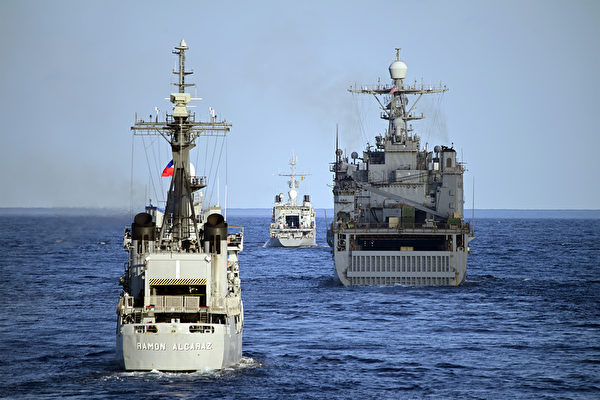The tension in the South China Sea between China and the Philippines has escalated sharply. Experts believe that while the United States currently does not need to immediately activate the “US-Philippines Mutual Defense Treaty,” it is necessary for all parties with interests in the region to unite and prevent instability in the South China Sea.
On June 17, Philippine Navy personnel were stopped by Chinese coast guard when they attempted to deliver supplies to troops stranded on the BRP Sierra Madre at the Second Thomas Shoal (known as Ren’ai Reef in China), leading to a violent clash between the two sides.
The Philippines accused China of ramming their vessels, confiscating seven firearms, and causing severe injuries to a Filipino naval soldier, which they described as a “blatant act of aggression.” The Philippines demanded the return of the confiscated equipment and compensation for the losses incurred.
Following the incident, US Secretary of State Blinken had a phone call with Philippine Foreign Minister, reiterating the US’s defense commitment to the Philippines under the Mutual Defense Treaty.
The Philippines has accused China of deliberate actions on June 17.
June Teufel Dreyer, a senior expert on US-China relations and a political science professor at the University of Miami, pointed out that China has been pressuring the Philippines for a long time.
Former Philippine President Duterte pursued a pro-Beijing policy, leading to fluctuations in relations between the Philippines and the US. President Marcos, who took office in 2022, has leaned more towards traditional ally, the US.
According to Dreyer, President Marcos has received support from the US and desires to counter China, but his means are limited and his reliance on the US remains uncertain due to US involvement in conflicts such as the Ukraine-Russia war and the Syria war.
Srikanth Kondapalli, Director of Institute of International Relations at Jawaharlal Nehru University in New Delhi, and a professor specializing in China issues, mentioned China’s strategy of pressuring countries like the Philippines until they succumb.
He analyzed that China’s approach would be two-fold – applying pressure through external military exercises and infiltrating the country internally to exert influence.
Some analysts believe that China’s frequent challenges in the South China Sea against the Philippines are to test the waters before potential conflicts in the Taiwan Strait to test the US’s determination to protect its allies. Dreyer agreed with this view.
“There isn’t a decisive point for US military intervention except for a large-scale invasion by China against the Philippines,” said Dreyer.
Dreyer also suggested that apart from military intervention, the US can assist the Philippines in various ways, such as escorting Philippine vessels to deliver supplies to stranded crew members on the BRP Sierra Madre at the Second Thomas Shoal, which is unlikely to provoke China.
Srikanth Kondapalli stated that since the Obama administration, successive US governments have taken a somewhat passive stance on the South China Sea disputes, emboldening China. He emphasized the necessity for all parties with interests in the region to unite to prevent instability in the South China Sea.

